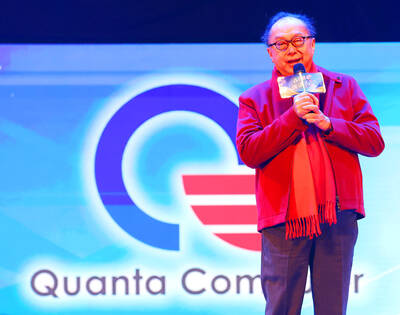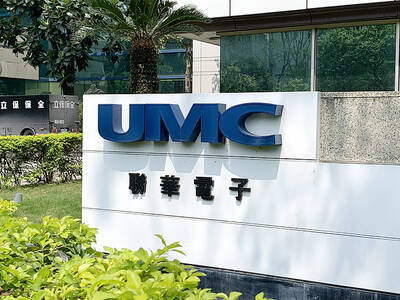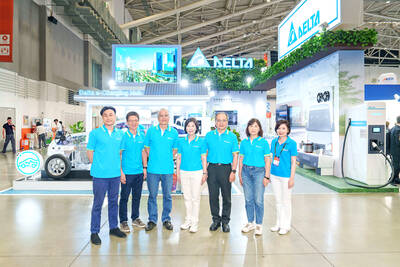Japanese stocks rose, with the Nikkei 225 Stock Average completing its biggest two-day gain in five weeks. Honda Motor Co led gains among exporters after it raised its annual earnings estimate and as the yen weakened.
"Automakers have a solid profit outlook that makes them more attractive," said Atsushi Osa, who helps oversee US$4.1 billion at Sumitomo Mitsui Asset Management Co. "I'm planning to continue increasing my stake" in Honda, Toyota Motor Corp and Nissan Motor Co. Osa said he expects the yen to weaken further.
The Nikkei rose 160.85, or 1.9 percent, to 8,500.79 at the 3pm close in Tokyo. The average gained 2.2 percent in the past two sessions, its biggest two-day advance since Dec. 27. The TOPIX index added 16.52, or 2 percent, to 837.70, ending a six-day, 5.1 percent drop. Computer-related companies and carmakers that depend on US demand accounted for about a third of the index's gain.
Mizuho Holdings Inc and other banks rallied after Kyodo Weekly reported that Nobuyuki Nakahara, who has advocated raising consumer prices and pumping money into the banking system, will replace Masaru Hayami as the Bank of Japan's next governor. Prime Minister Junichiro Koizumi denied the report.
Thirteen shares gained for every one that fell on the Tokyo Stock Exchange's first section.
Honda, the world's No. 3 automaker by market value, jumped Japanese yen 210, or 5.3 percent, to Japanese yen 4,200, its biggest gain since Sept. 17. Honda after the market closed on Friday raised its forecast for net income for the year to March 31 to Japanese yen 430 billion (US$3.6 billion) from its earlier prediction of Japanese yen 410 billion. It increased its sales forecast to Japanese yen 8 trillion, from Japanese yen 7.9 trillion.
Toyota, the No. 4 automaker in the US, rose Japanese yen 100, or 3.5 percent, to Japanese yen 2,955. Canon Inc, which relies on overseas sales for 70 percent of revenue, gained Japanese yen 70, or 1.7 percent, to Japanese yen 4,260.
Sony Corp, the world's second-biggest consumer electronics maker, climbed Japanese yen 90, or 1.9 percent, to Y4,800. Sony expects the yen to average Japanese yen 121 to the US dollar throughout the business year.
Fuji Photo Film Co, the world's second-biggest maker of film, added Japanese yen 90, or 2.5 percent, to Japanese yen 3,700, after the company said third-quarter profit rose 2.3 percent because it sold more digital cameras during the holidays.
The TOPIX Banks index was the third-biggest gainer on the benchmark, accounting for about 15 percent of the index's advance.
Mizuho Holdings Inc, Japan's largest bank by assets, rallied Japanese yen 11,000, or 9.6 percent, to Japanese yen 126,000. UFJ Holdings Inc, Japan's No. 4 bank, jumped Japanese yen 11,000, or 8 percent, to Japanese yen 148,000.
Nissho Electronics Corp surged Japanese yen 99, or 15 percent, to Japanese yen 778. The company and Sumisho Electronics Co, two Japanese traders of information and telecommunications systems, will each take a 19.9 percent stake in the other's company to strengthen their businesses.
Sumisho Electronics rose Japanese yen 70, or 9 percent, to Japanese yen 850.
Among most active stocks, Softbank Corp jumped Japanese yen 101, or 6.6 percent, to Japanese yen 1,644. Softbank, Japan's biggest Internet investor, will extend its discounts for asymmetric digital subscriber lines service for three months to compete with rival Nippon Telegraph & Telephone Corp, the Nihon Keizai newspaper reported over the weekend.
The campaign helped Softbank gain more subscribers than NTT East Corp in August, the report said.
NTT, Japan's largest telephone company, declined Japanese yen 2,000, or 0.5 percent, to Japanese yen 400,000.
Chipmaking equipment makers declined after Applied Materials Inc said orders for its chip-making equipment fell more than it forecast last quarter.
Advantest Corp, the world's biggest maker of equipment used to test computer memory chips, shed Japanese yen 10, or 0.2 percent, to Japanese yen 5,270.

Quanta Computer Inc (廣達) chairman Barry Lam (林百里) is expected to share his views about the artificial intelligence (AI) industry’s prospects during his speech at the company’s 37th anniversary ceremony, as AI servers have become a new growth engine for the equipment manufacturing service provider. Lam’s speech is much anticipated, as Quanta has risen as one of the world’s major AI server suppliers. The company reported a 30 percent year-on-year growth in consolidated revenue to NT$1.41 trillion (US$43.35 billion) last year, thanks to fast-growing demand for servers, especially those with AI capabilities. The company told investors in November last year that

United Microelectronics Corp (UMC, 聯電) forecast that its wafer shipments this quarter would grow up to 7 percent sequentially and the factory utilization rate would rise to 75 percent, indicating that customers did not alter their ordering behavior due to the US President Donald Trump’s capricious US tariff policies. However, the uncertainty about US tariffs has weighed on the chipmaker’s business visibility for the second half of this year, UMC chief financial officer Liu Chi-tung (劉啟東) said at an online earnings conference yesterday. “Although the escalating trade tensions and global tariff policies have increased uncertainty in the semiconductor industry, we have not

Intel Corp has named Tasha Chuang (莊蓓瑜) to lead Intel Taiwan in a bid to reinforce relations between the company and its Taiwanese partners. The appointment of Chuang as general manager for Intel Taiwan takes effect on Thursday, the firm said in a statement yesterday. Chuang is to lead her team in Taiwan to pursue product development and sales growth in an effort to reinforce the company’s ties with its partners and clients, Intel said. Chuang was previously in charge of managing Intel’s ties with leading Taiwanese PC brand Asustek Computer Inc (華碩), which included helping Asustek strengthen its global businesses, the company

Power supply and electronic components maker Delta Electronics Inc (台達電) yesterday said it plans to ship its new 1 megawatt charging systems for electric trucks and buses in the first half of next year at the earliest. The new charging piles, which deliver up to 1 megawatt of charging power, are designed for heavy-duty electric vehicles, and support a maximum current of 1,500 amperes and output of 1,250 volts, Delta said in a news release. “If everything goes smoothly, we could begin shipping those new charging systems as early as in the first half of next year,” a company official said. The new